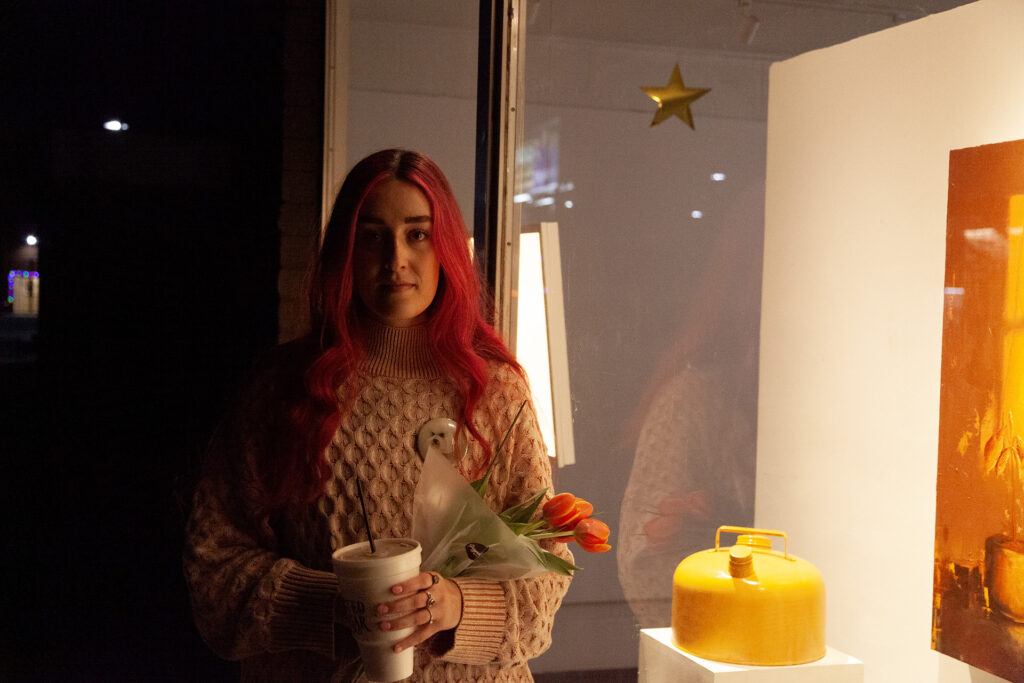This edition of 5 Q’s we followed up with the artist Camryn Maher to discuss her exhibition, “Wait.”, in the Holland Project’s Window Gallery. We asked her about the ideas and influences that go into her work, and her thought processes behind the exhibition.
Camryn Maher is a mixed media and installation artist who explores the role of color in emotion, memories and experience. In her practice, she is motivated by synesthetic perceptions. Camryn creates work that encapsulates instances of deeply touching personal experience, intending to motivate internal reflection and resonance. From the Great Basin, Camryn is a Master of Fine Arts Candidate and Instructor at the University of Nevada, Reno. She lives and works in Reno, Nevada.
https://www.camrynmaher.com/
View more photos of “Wait.” on our Gallery Archive Page or on Flickr
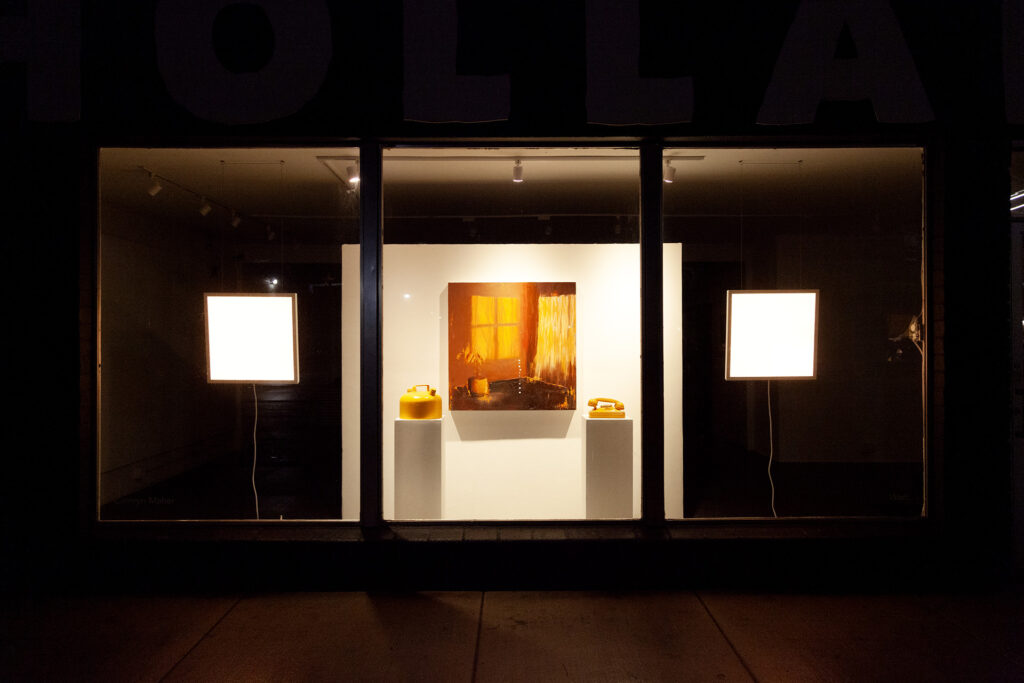
1. What was your approach to creating your exhibition, “Wait.”, at the Holland Project’s Window Gallery? Were there specific ideas and inspirations influencing you?
Color has a huge influence on me, and I think that’s a really involved part of this work. I have synesthesia, so practically since the day I was born, I have processed people, emotions and experiences as colors in my mind. When I talk to somebody or think about their nature, I feel colors in my mind. This also happens when I’m processing a strong emotion. Feelings all have such clear colors to me and I can’t ignore them. So, this kind of thing creates a nice transition between experiences and the artwork I make about them. The artwork in “Wait.” is all about that. Each piece is informed by different experiences or particular moments but they are all deeply rooted in the same feelings of longing, time passing, and the type of sensation you get from standing very still. I’m really inspired by a Russian artist named Leonid Tishkov. He has a series called Private Moon that’s spanned a few decades, where he installs an LED sculpture of the crescent moon in different landscapes and photographs it all over the world. There’s a folktale that accompanies his piece about the moon who fell to earth one day and the man who saved her and took care of her. His work has somewhat of a supernatural complexity at the same time as holding these really simple emotions about love, time, longing, and loneliness. The way he uses light in his work (especially low light and moonlight) conveys more information emotionally to me than any visuals ever could. I thought about his work a lot when I was making the pieces in “Wait.”. I also spent a lot of time looking at my own moon and looking at the way light moves through windows at night.
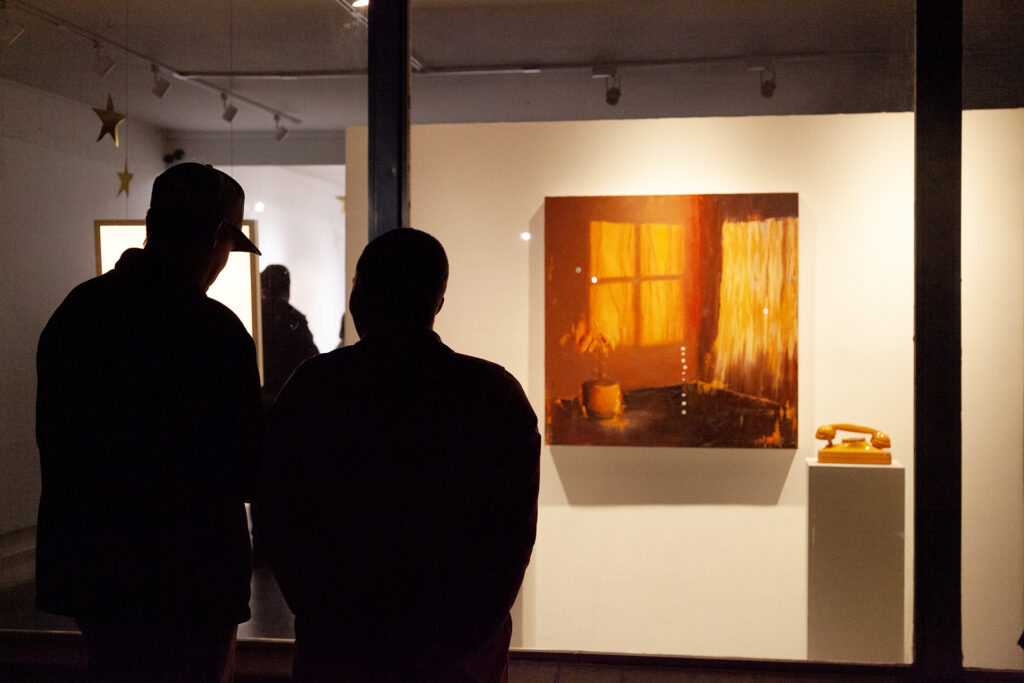
2. Your art practice uses multiple mediums to speak to your ideas and concepts. How does painting, sculpture, drawing, etc. inform your practice? What are your reasons for having multiple mediums in your exhibitions?
I have varying ties to all different types of media. I am really motivated to become as versatile as I can in as many different types of media as possible to be able to express myself clearly and succinctly. I have a strong background in painting. I am very drawn to the way I am able to manipulate and customize color to be exactly what I want it to be in a painting. 3-dimensional artwork like sculptures or projected light brings a physicality to my work that helps to create a type of real, physical space for an emotional experience to happen. Color is my favorite medium to use in a piece of work and it’s also the most readily available to me because of the way I process things. If color is my common thread in a body of work, and deep, strong emotion is driving the color, I’m not particular about the materials I will reach for to speak about it. I really do think there is potential in everything to say something special.
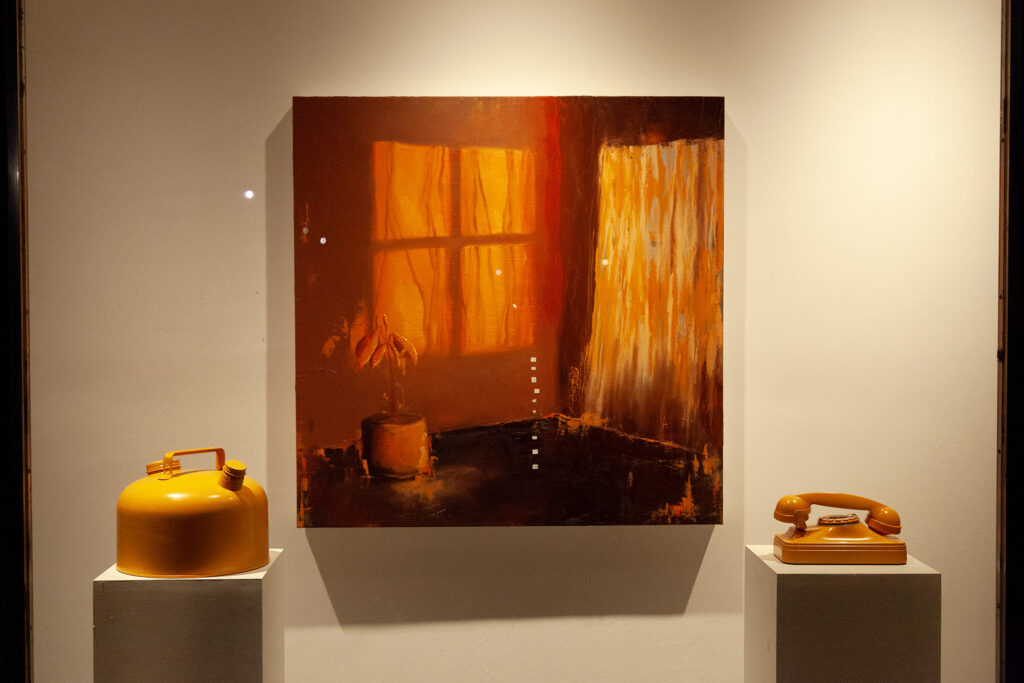
3. You spoke of your exhibition, “Wait.”, as an opportunity to rework the possibilities of the pieces you previously showed in your exhibition, “7 Shades of Longing (one for every letter in your name.)”. How did this opportunity work out? What were the ideas you were trying to work through?
This exhibition involved a lot of emotions I’ve been sitting on for a long time. For me, I feel that making a piece of art is this process of trying to communicate something I feel very deep inside and I repeat that enough times until I finally say it right or until I run out of things to say about it. I have been talking about the emotions involved in “Wait.” in some form or another in my practice for a long time and I think those threads will stay with me for a while. There is something about revisiting an experience over and over despite the passage of time and the way I and everything around me changes that has a grip on me. I appreciate and am deeply attached to the involvement of time in the unfolding of emotional experiences.
When I created “7 Shades of Longing (one for every letter in your name.)” I was actively experiencing the emotions involved in that work in a real, visceral sense. After I finished creating the work, I had a really strong and unprecedented emotional reaction to it because it was the first time I was actually able to look at what I had been feeling inside me for so long and think about what it meant to me now that it existed in a physical space. As time has passed, I’ve continued to think about that work and to think about what those emotions and experiences mean to me now. I’m older, I’ve had different experiences, and I’ve felt other things since. Those feelings from “7 Shades of Longing” still live with me, but it was really wonderful to be given an opportunity to reframe them as something quieter, deeper and more accepted in “Wait.”.


4. The lights for the exhibition are meant to be on throughout the exhibition. The viewer can interact with them at any time of day and have different experiences. How did this idea come about, and how does it inform the viewer’s relationship to the work?
When I first began creating this body of work, I didn’t yet know what a lot of the pieces would be, but I felt from the beginning how important it was that I give the pieces the right environment to live in. In trying to communicate my feelings, I was extremely motivated to create a physical environment where a viewer could be visually and emotionally confronted and not be able to help but feel exactly what I was feeling inside myself. Using light was the most physically all-encompassing way I could think of to accomplish this. Light has a highly utilitarian value to us, but it also has beautiful, soft, and ephemeral qualities that I can’t overlook when I’m making emotional work. To me, light has the ability to convey feelings that go beyond words.
I chose to make a piece that uses light like No. 1 because I wanted to create an artwork that encompassed both the light being projected and the empty space being held by the light in a kind of in-between space. In its original installation in “7 Shades of Longing”, the two panels in No. 1 were installed opposite each other, with nearly 15ft of space between them. By mirroring each other and casting off a warm, glowing, orange light, this really beautiful moment was created where you could stand between them and feel how they felt. In “Wait.” I wanted this to be heightened. The Window Gallery space provides a beautiful opportunity to open the space between the lights in No. 1 outward to include the viewer. I think the light they cast feels both inviting and lonely, and deeply personal and individual when you’re standing in front of them.
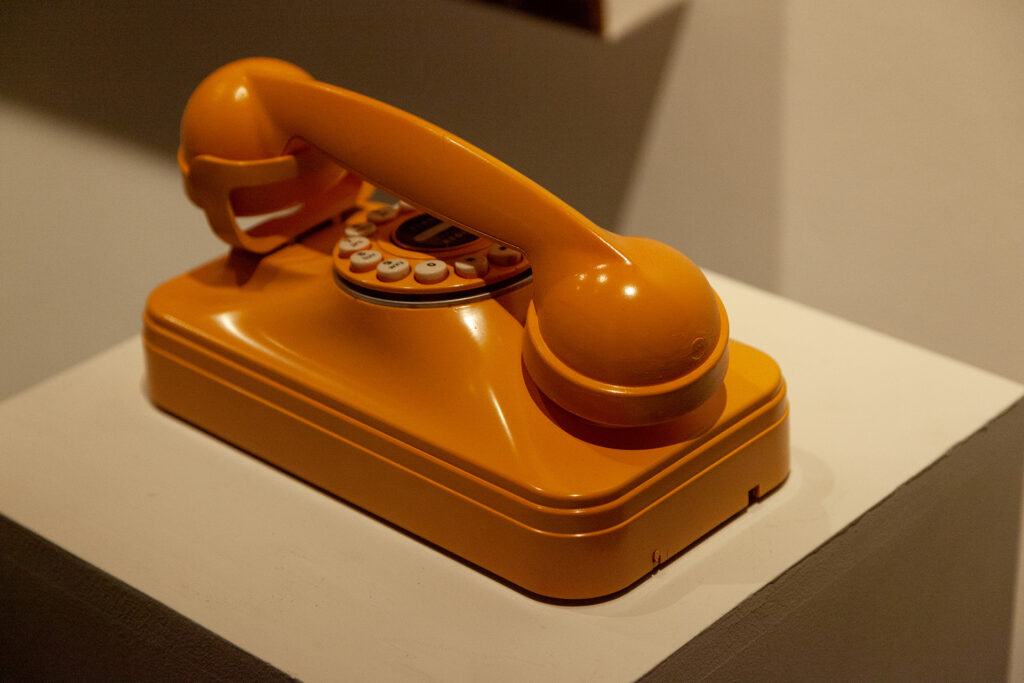
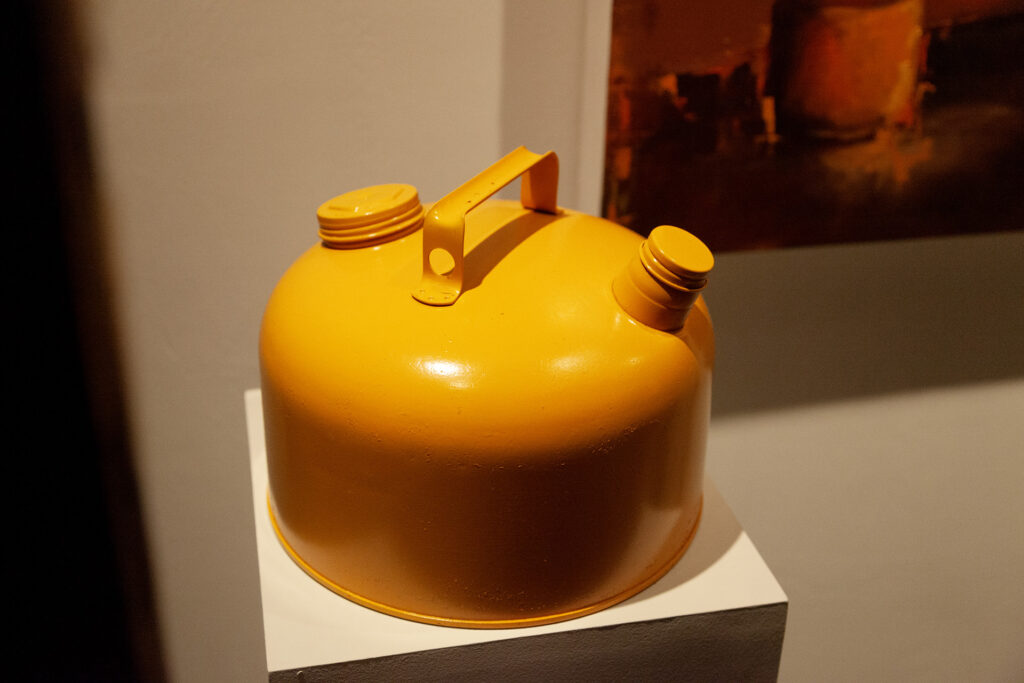
5. From the restored telephone, and gas can to the always-on projected lights, your sculptural pieces can be identified as assisted readymades. What is your relationship with readymades in art and how do you use them? Is there an intention to mirror reality with these objects?
I have always been a little bit tentative toward the term “readymades” and the use of these types of objects in my work. For a long time, I didn’t associate myself with this area of contemporary and modern sculpture because I felt like I didn’t know enough about it. That remained as kind of a question for me when I started making the work in “Wait.” that involved such a heavy presence of assisted readymades. This past summer, I had the wonderful opportunity to participate in a workshop by the Iranian artist Minoosh Zomorodinia. In her work, Zomorodinia accesses media ranging from photography to drawing to performance. I was so compelled by her mastery of all these forms and the fearlessness in her approach to include anything and everything that would get her point across in the work. My biggest takeaway comes from a simple statement she said a number of times: “Everything I make is art.”
It showed me that every medium has a place in my work, even ones I don’t know very much about. Speaking more specifically, I have also settled on the understanding that sculpture and installation allow me to express myself in a more physical sense, by letting an object represent something that I don’t know how else to express. Though I can paint or draw an image I see in my mind, I can’t embody the physical qualities objects hold when you’re in the presence of them. This made my found and acquired readymades a non-negotiable essential in the work in “7 Shades of Longing” and “Wait.”. While mirroring reality, I think that more importantly the objects are intended to be mirrors of each other. Each set of objects together acts as an embodiment of a mirror, even if there are visual dissimilarities.
